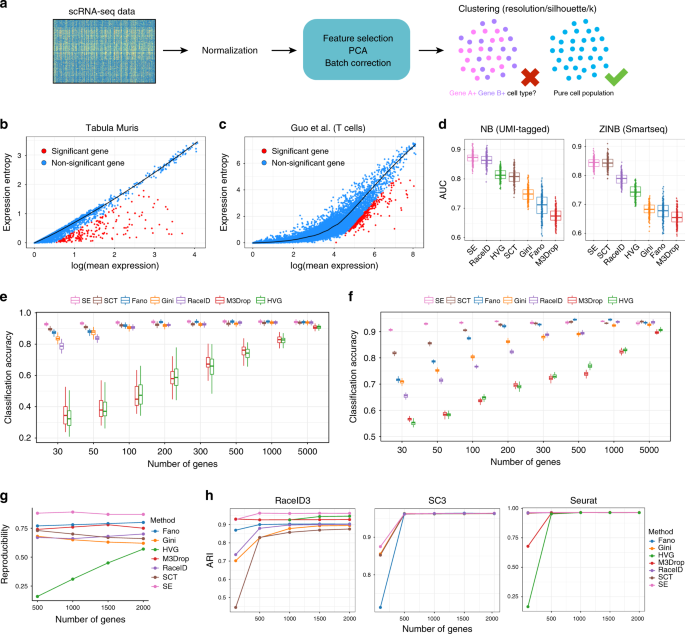- Select a language for the TTS:
- UK English Female
- UK English Male
- US English Female
- US English Male
- Australian Female
- Australian Male
- Language selected: (auto detect) - EN
Play all audios:
Sleep and neuropsychiatric illness are entwined. Disturbances of sleep are DSM-5 diagnostic features for major depressive disorder, generalized anxiety disorder, post-traumatic stress
disorder, and bipolar disorder, and are consistent features of psychoses and most neurodegenerative disorders. Pharmacologic or psychological treatment of these disorders often improves the
sleep impairment, and medications used to treat neuropsychiatric disorders may also be used as primary treatments for sleep disorders. The most promising aspect of this relationship was
explicitly postulated 30 years ago for mood disorders: not only is sleep disturbance a phenotypic feature of many neuropsychiatric illnesses, but it may in fact predispose, contribute to,
and dare we say it, cause them [1, 2]. The Epidemiologic Catchment Area study was the first high-profile data demonstrating that insomnia was a strong predictor of incident mood disorders,
suggesting that sleeplessness was thus “an opportunity for prevention”. This type of “bidirectional” relationship with insomnia has been demonstrated (although not equivocally) over the last
30 years for a number of neuropsychiatric disorders, including bipolar disorder [3], anxiety disorders [4], PTSD [5], substance use disorders [6], and Alzheimer’s disease [7]. Sleep
disturbance has also been established as a risk for transdiagnostic symptoms such as suicidality and pain [8, 9]. Further, circadian rhythm dysregulation (independent of sleep disturbance)
may be a risk for neuropsychiatric illness, including bipolar disorder, neurodegenerative disorders, and schizophrenia [10, 11]. Many of the papers in the current issue of
Neuropsychopharmacology Reviews discuss the bidirectional relationship of sleep disturbance/circadian rhythms and neuropsychiatric illness, and their potential underlying neurobiological
mechanisms. As recognition of the complex role that sleep disturbance plays in psychiatric illness, DSM-5 mitigated the nearly impossible task for clinicians of determining whether insomnia
was caused by psychiatric illness or vice-versa. This continued the evolution of previous DSM editions in eliminating distinctions between primary vs secondary, and subsequently primary vs
comorbid, insomnia; instead insomnia diagnosis in DSM-5 is primarily based on symptom features, frequency, and duration. As a result, it encourages independent treatment of insomnia, as well
as facilitating further research into the role of sleep disturbance in the etiology and natural history of psychiatric illness. Multiple approaches to the analysis of sleep function exist,
many of which are addressed in this special issue. Whereas the EEG has been the standard method to determine differences in brain activity during vigilance states, fMRI, DTI, and other
imaging methods have added information about the role of specific networks in sleep/wake dysfunction and hyperarousal conditions. Further, multimodal and longitudinal recordings of
physiological parameters using wearables will add precision to the characterization of the arousal dysfunctions [12]. Significant advances in systems neuroscience have generated a much more
detailed picture of the neuronal circuitry underlying sleep/wake control (reviewed by Jones et al. in this issue), and hyperarousal [13, 14]. For instance, Eban-Rothschild et al. [15]
described a causal role of mesocorticolimbic dopaminergic activity in sleep and wakefulness. Alterations of dopaminergic neurons have long been associated with hyperarousal, PTSD [14],
autism [16], and alcoholism and drug abuse [17]. Also, advances in molecular genetics of memory [18], cognitive performance, and circadian oscillations have dramatically increased our
understanding of such connections [19, 20]. Hypocretin/orexin release in the brain correlates with accumulation of beta amyloid peptides, providing a molecular connection between sleep
circuits and sleep dysfunction in Alzheimer’s disease [21]. In addition to AD, sleep disruption accompanies the progression of several neurodegenerative disorders including Parkinson’s and
newly described autoimmune disorders [22, 23]. Genetic variants associated with the neuronal activity associated with these circuits will likely predict risk for neuropsychiatric disorders.
Together, this special issue highlights the role of sleep in maintaining a healthy brain. We expect that a comprehensive characterization of sleep and arousal circuits will increase the
arsenal of methods to precisely increase sleep quality, thereby increasing quality of life in neuropsychiatric patients. FUNDING AND DISCLOSURE The authors declare no competing interests.
REFERENCES * Wehr TA, Sack DA, Rosenthal NE. Sleep reduction as a final common pathway in the genesis of mania. Am J Psychiatry 1987;144:201–4. Article CAS Google Scholar * Ford DE,
Kamerow DB. Epidemiologic study of sleep disturbances and psychiatric disorders. An opportunity for prevention?. JAMA 1989;262:1479–84. Article CAS Google Scholar * Harvey AG. Sleep and
circadian functioning: critical mechanisms in the mood disorders? Annu Rev Clin Psychol 2011;7:297–319. Article Google Scholar * Chung KH, Li CY, Kuo SY, Sithole T, Liu WW, Chung MH. Risk
of psychiatric disorders in patients with chronic insomnia and sedative-hypnotic prescription: a nationwide population-based follow-up study. J Clin Sleep Med 2015;11:543–51. Article Google
Scholar * Wang HE, Campbell-Sills L, Kessler RC, Sun X, Heeringa SG, Nock MK, et al. Pre-deployment insomnia is associated with post-deployment post-traumatic stress disorder and suicidal
ideation in US Army soldiers. Sleep. 2019;42. * Dolsen MR, Harvey AG. Life-time history of insomnia and hypersomnia symptoms as correlates of alcohol, cocaine and heroin use and relapse
among adults seeking substance use treatment in the United States from 1991 to 1994. Addiction 2017;112:1104–11. Article Google Scholar * Irwin MR, Vitiello MV. Implications of sleep
disturbance and inflammation for Alzheimer’s disease dementia. Lancet Neurol 2019;18:296–306. Article CAS Google Scholar * Pigeon WR, Pinquart M, Conner K. Meta-analysis of sleep
disturbance and suicidal thoughts and behaviors. J Clin Psychiatry. 2012;73:e1160–7. Article Google Scholar * Finan PH, Goodin BR, Smith MT. The association of sleep and pain: an update
and a path forward. J Pain 2013;14:1539–52. Article Google Scholar * Leng Y, Musiek ES, Hu K, Cappuccio FP, Yaffe K. Association between circadian rhythms and neurodegenerative diseases.
Lancet Neurol 2019;18:307–18. Article Google Scholar * Wulff K, Dijk DJ, Middleton B, Foster RG, Joyce EM. Sleep and circadian rhythm disruption in schizophrenia. Br J Psychiatry
2012;200:308–16. Article Google Scholar * Goldstein-Piekarski AN, Williams LM. New technologies for precision psychiatry. Neuropsychopharmacology. 2019. * Jones BE. Arousal and sleep
circuits. Neuropsychopharmacology. 2019. Article Google Scholar * Neylan TC. Sleep disturbance across anxiety-related disorders: an updated review and a discussion about the
transdiagnostic role of arousal and threat. Neuropsychopharmacology. 2019. * Eban-Rothschild A, Rothschild G, Giardino WJ, Jones JR, de Lecea L. VTA dopaminergic neurons regulate
ethologically relevant sleep-wake behaviors. Nat Neurosci 2016;19:1356–66. Article CAS Google Scholar * Missig G, McDougle CJ, Carlezon WA, Jr. Sleep as a translationally-relevant
endpoint in studies of autism spectrum disorder (ASD). Neuropsychopharmacology. 2019. * Koob GF, Colrain IM. Alcohol use disorder and sleep disturbances: a feed-forward allostatic framework.
Neuropsychopharmacology. 2019. * Born J. Neurochemical mechanisms for memory processing during sleep – basic findings in humans and neuropsychiatric implications. Neuropsychopharmacology.
2019. * Hudson AN, Van Dongen HPA, Honn KA. Sleep deprivation, vigilant attention, and brain function: a review. Neuropsychopharmacology. 2019. * Ashbrook L, Krystal A, Fu YH, Ptacek LJ.
Genetics of the human circadian clock and sleep homeostat. Neuropsychopharmacology. 2019. * Holtzman DM. Bidirectional relationship between sleep and Alzheimer’s disease: role of amyloid,
tau, and other factors. Neuropsychopharmacology. 2019. * Stefani A, Hogl B. Sleep in Parkinson’s disease. Neuropsychopharmacology. 2019. * Iranzo A. Sleep and neurological autoimmune
diseases. Neuropsychopharmacology. 2019. Download references AUTHOR INFORMATION AUTHORS AND AFFILIATIONS * Professor of Psychiatry, Harvard Medical School, Departments of Psychiatry and
Neurology, Massachusetts General Hospital, Boston, USA John W. Winkelman * Professor of Psychiatry and Behavioral Sciences. Dept. of Psychiatry and Behavioral Sciences, Stanford University
Medical School, Stanford, USA Luis de Lecea Authors * John W. Winkelman View author publications You can also search for this author inPubMed Google Scholar * Luis de Lecea View author
publications You can also search for this author inPubMed Google Scholar CORRESPONDING AUTHORS Correspondence to John W. Winkelman or Luis de Lecea. ADDITIONAL INFORMATION PUBLISHER’S NOTE
Springer Nature remains neutral with regard to jurisdictional claims in published maps and institutional affiliations. RIGHTS AND PERMISSIONS Reprints and permissions ABOUT THIS ARTICLE CITE
THIS ARTICLE Winkelman, J.W., Lecea, L.d. Sleep and neuropsychiatric illness. _Neuropsychopharmacol._ 45, 1–2 (2020). https://doi.org/10.1038/s41386-019-0514-5 Download citation * Received:
27 August 2019 * Accepted: 27 August 2019 * Published: 05 September 2019 * Issue Date: January 2020 * DOI: https://doi.org/10.1038/s41386-019-0514-5 SHARE THIS ARTICLE Anyone you share the
following link with will be able to read this content: Get shareable link Sorry, a shareable link is not currently available for this article. Copy to clipboard Provided by the Springer
Nature SharedIt content-sharing initiative







